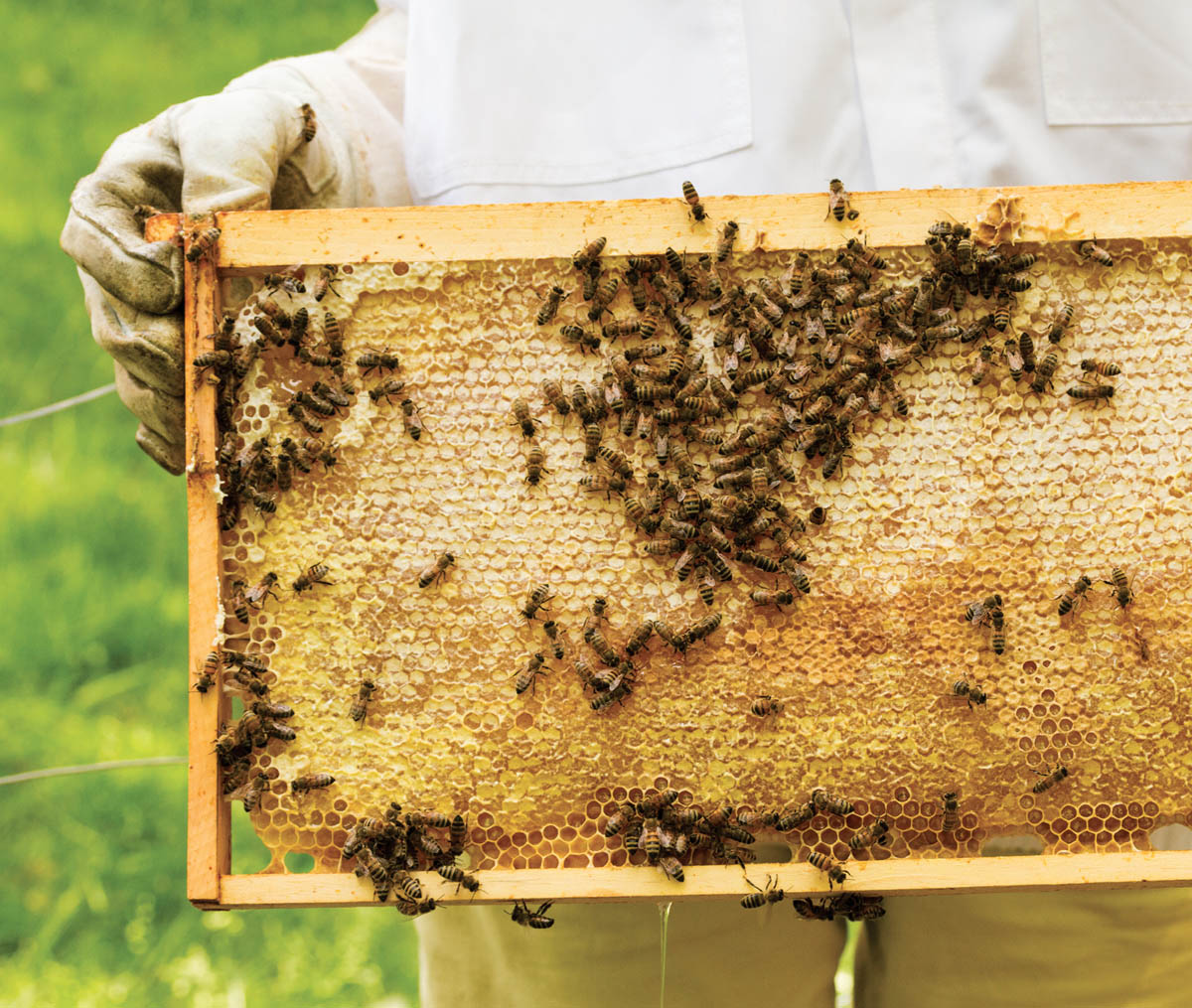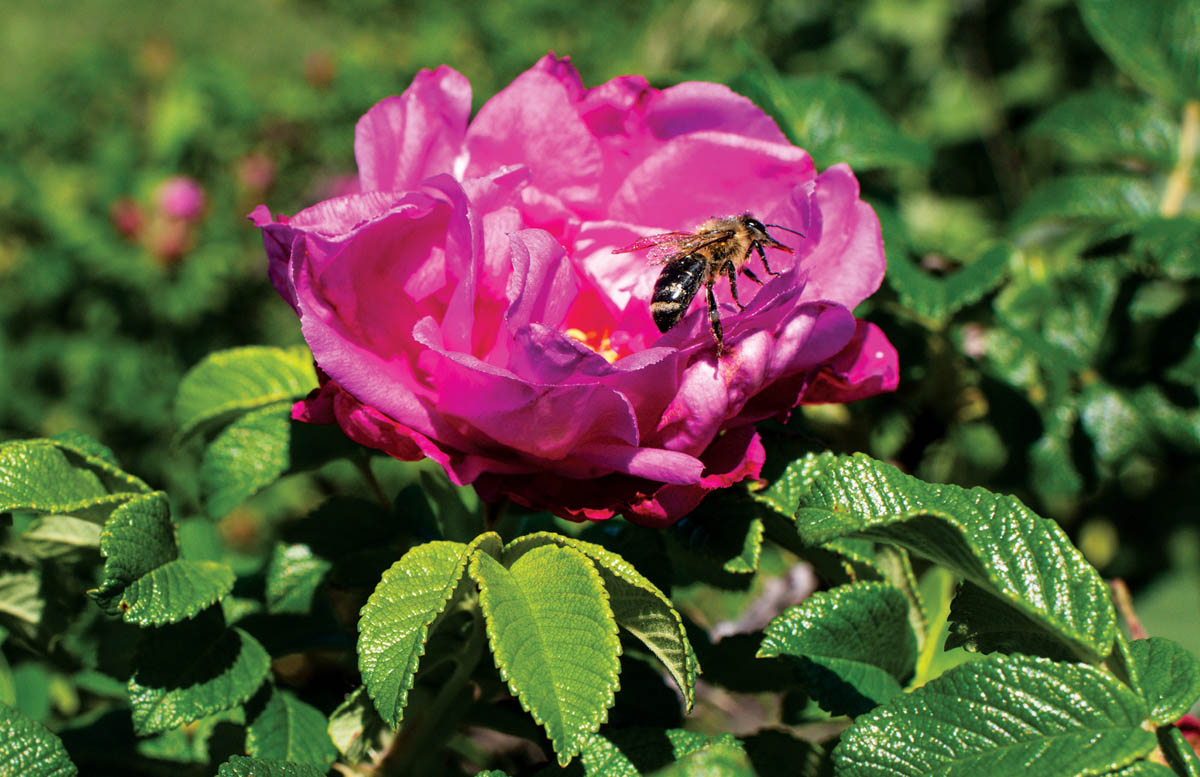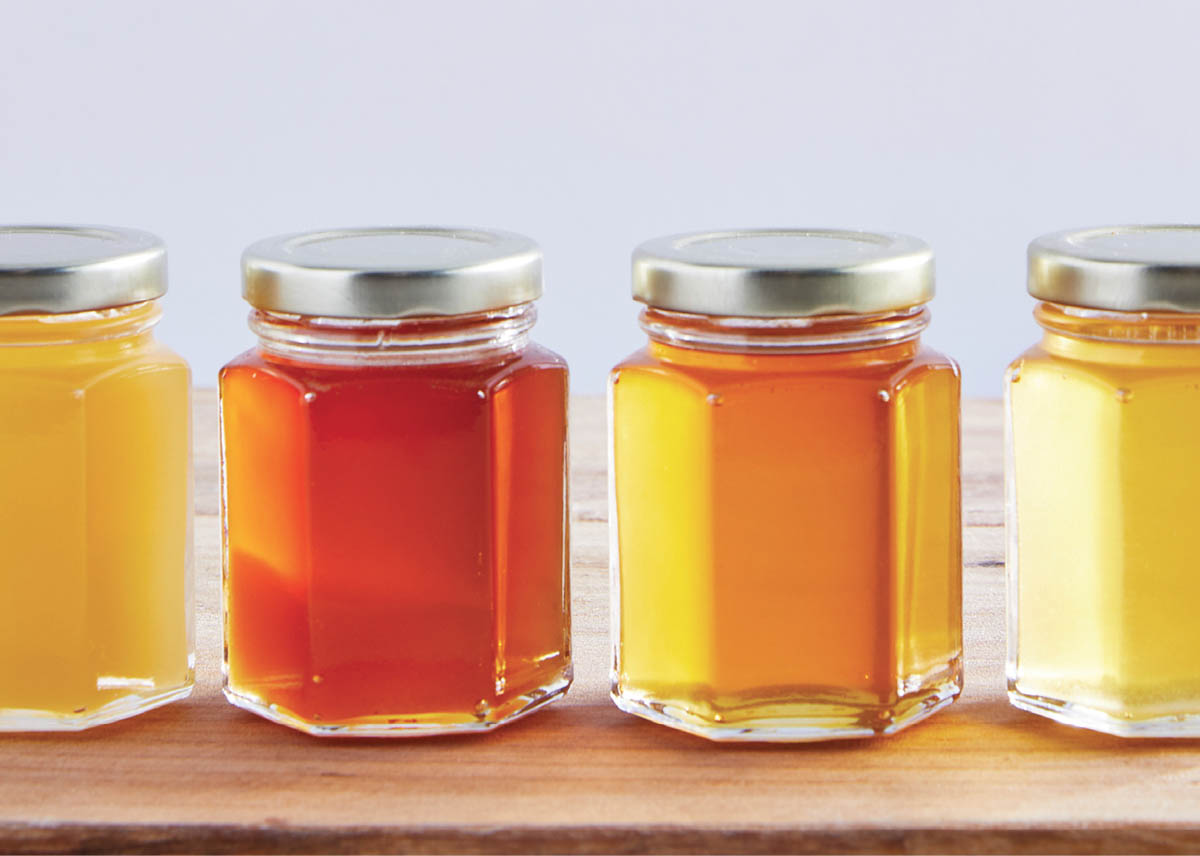
From the Hive to the Jar


To fully comprehend what a wondrous substance honey is, we have to understand how it’s made. Bees collect nectar from flowers and different types of flowers contribute different properties to the honey. The health of the bee itself, and the type of honeybee, affects the overall quality of the honey, too.

Nectar is a sugar-rich liquid produced by plants for a specific beneficial evolutionary purpose: to lure in pollinators. Plants don’t have legs or wings, but they need to be able to move their pollen around if they’re going to survive as a species. So they set the table, so to speak, with flowers in colors and shapes that attract the pollinator of their choice. And deep within, they hold a reservoir of sweet nectar for their visiting friends to drink.
Most of the honeybees in a hive are female worker bees. Older female worker bees have the job of flying out of the hive to collect pollen and nectar. They fill up their crop, also called a honey stomach, which keeps the nectar out of the digestive system, then fly back to the hive.
Inside the hive, the nectar is handed off to a younger female worker — the house bee — who stays inside the hive and minds the pantry. She carries the nectar in her crop to an empty cell for storage. The nectar that started out containing only chemicals and sugars from the plant is already changed. Inside both of the bees’ crops, the nectar is mixed with enzymes and symbiotic organisms that begin breaking down sucrose into glucose and fructose. This chemical reaction continues as the honey is stored in its beeswax cell.
The next step of the process is for the house bee to dehydrate the mixture. Nectar is typically between 70 and 80 percent water and must be 14 to 18 percent for the final product to be stable (so that it doesn’t ferment or degrade) and ready to store in the cell. Dehydration is hard work for the worker bees. They flap their wings over the open cells to assist the process of evaporation within the warm hive. When the honey is ready, the house bee produces a wax lid for the cell and moves on to the next job.
So, what are we talking about when we say “honeybee”? Most often, we’re referring to the Western or European honeybee, Apis mellifera, but all members of the genus Apis — which contains seven official species — gather honey and pollen and can technically be called honeybees.
When you’re just getting to know bees, though, it may be difficult to tell them apart from yellow jackets, wasps, hornets, bumblebees, carpenter bees or any of the 16,000 to 20,000 other species of bees in the world. In addition to its physical characteristics, the honeybee is unlike many other stinging insects in that it uses its stinger as a very last defense — and gives up its life along with its stinger.
Although they’re not included in the Apis species and aren’t technically included in the term “honeybee,” stingless bees also collect honey. Stingless bees comprise a group called the meliponines and are made up of an estimated 500 species, mostly found in tropical parts of the world including Asia, South America, Australia, and Africa. They are grossly understudied but have been important in the honey production of many countries throughout history. They do not produce a large harvest: the average stingless bee makes 61⁄2 pounds (3 kg) of honey per year compared to A. mellifera, which typically produces 66 pounds (30 kg). But those who live alongside stingless bees believe that their honey is more medicinal. Studies have shown that in comparison with A. mellifera, the honey of many stingless bee species contains more hydrogen peroxide and gluconic acid, the two properties that are generally accepted to be responsible for honey’s antibacterial properties.
Both Indian and Chinese traditional healing have recognized the differing healing properties of each individual species of stingless bee. Ayurveda recognizes eight kinds of honey, each specific for a different kind of ailment. Traditional Chinese Medicine recognizes four kinds of honey, and each of these is applied to different body systems and ailments. Long before modern scientific advancements could prove it, these cultures recognized that honey is multidimensional, not only affected by what kind of nectar is collected but also by which species does the collecting.

The European honeybee called Apis mellifera pollinates more than 250 roses on our farm in Ohio.
Honey is not a homogeneous substance, so analysis of its vitamin and mineral content will reveal variations from batch to batch depending on the variety of bees collecting it, the plants it’s collected from, and what the weather has been like in a given year. This makes it difficult to make a standard claim about the vitamin and mineral content of honey. Honey is like wine in that each year or each varietal is a vintage, a snapshot in time that can never be fully replicated. There are, however, some standard properties of honey that we can expect to find across the board.
Honey is hygroscopic. It readily absorbs moisture. Because of this property, honey is able to absorb water-soluble chemicals from plants; it’s the reason that honey is such a great medium for herbal infusions.
Honey has antibacterial properties. If honey comes in contact with bacteria, it sucks the water content through the cell walls, effectively dehydrating and killing the bacteria. Honey retains this antibacterial quality even when highly diluted.
Honey is acidic. This is another mechanism for killing off microorganisms. Honey is made up of 35 to 40 percent fructose and 30 to 35 percent glucose. The glucose content in nectar breaks down in the presence of water, creating hydrogen peroxide and gluconic acid. Hydrogen peroxide is responsible for some of honey’s antimicrobial properties, and gluconic acid is an acidity regulator that lends honey its abilities as a preservative.
Honey can be a good source of antioxidants. These molecules protect the body from damage caused by harmful molecules called free radicals. The darker the honey, the higher the antioxidant level and the higher the levels of ascorbic acid (vitamin C) and other organic acids (caffeic, cinnamic, gluconic, hydroxybenzoic, and malic). It is worth noting that the antioxidants found in honey are identical in form and structure to the antioxidants found in the fruits, vegetables, and herbs from which the nectar was harvested.
Honey varietals with some of the highest antioxidant levels:
|
|
